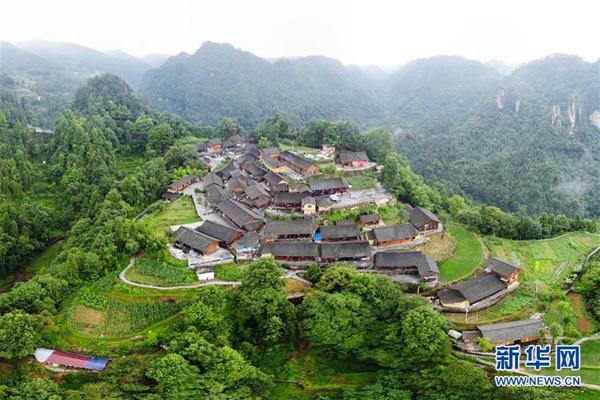


Tucked away in the remote mountains of western Hunan province, Shibadong is a pristine village mainly inhabited by people of the Miao ethnicity.

For many years, people in the village enjoyed simple lives. They foraged for vegetables in the wild and ate smoked bacons, and celebrated with their unique songs and dances within the secluded community.
The vast mountains provided the very basic subsistence for them to get by, but also formed barriers from modern prosperity.
In 2013, the net income of the 939 villagers in Shibadong was only 1,668 yuan (US$241.03), only 18.75% of the national average of rural residents. Over half of the population lived below the poverty line.
After three years, Shibadong officially ridded itself of poverty. In 2017, the per capita income rose to 8,313 yuan, much higher than that year's national poverty line of about 3,000 yuan. And in 2019, the per capita income in the village reached 14,668 yuan, almost nine times the level in 2013.
Paradigm for targeted poverty alleviation
On Nov. 3, 2013, Chinese President Xi Jinping visited Shibadong and proposed, for the first time, the idea of targeted poverty alleviation, which indicated tailored relief measures to different local conditions.

Looking back, Shibadong's success depended on well-considered, quantitative, and transparent methods to ensure that appropriate resources are used in the right place at the right time effectively under strict supervision and evaluations.
The first step was to identify the people in need. A working team was dispatched to Shibadong in late 2013 to sort out which households were in need, and officials were designated to the region to take charge of carrying out targeted measures.
Several methods of poverty alleviation were used: industry, creating sustainable micro businesses; infrastructure, improving local facilities and rural environment; ecological compensation; and social security.
In view of its local conditions, the village has decided on several major industries: rural tourism, embroidery, crop cultivation, livestock breeding, and bottling water.
Kiwi fruit was a suitable crop for the local environment, but the limited arable land and the scattered distribution of the village limited business growth. So Shibadong rented land and built sprawling plantations of high-quality kiwi fruit in nearby villages and towns. Companies were set up to sell the produce they grew directly to the market.
Tourism is booming in the village, thanks to its unique Miao culture, special landscapes, as well as improved facilities. Last year, the village received more than 600,000 visitors, twice the number of the year before. Some villagers are operating restaurants and running inns, while others are working as tour guides and shuttle bus drivers.
The local embroidery has also become a source of income. In 2014, the village founded a cooperative to make and sell embroidery. Dozens of local women joined the team that later grew into a promising business with an average annual revenue of 600,000 yuan.
